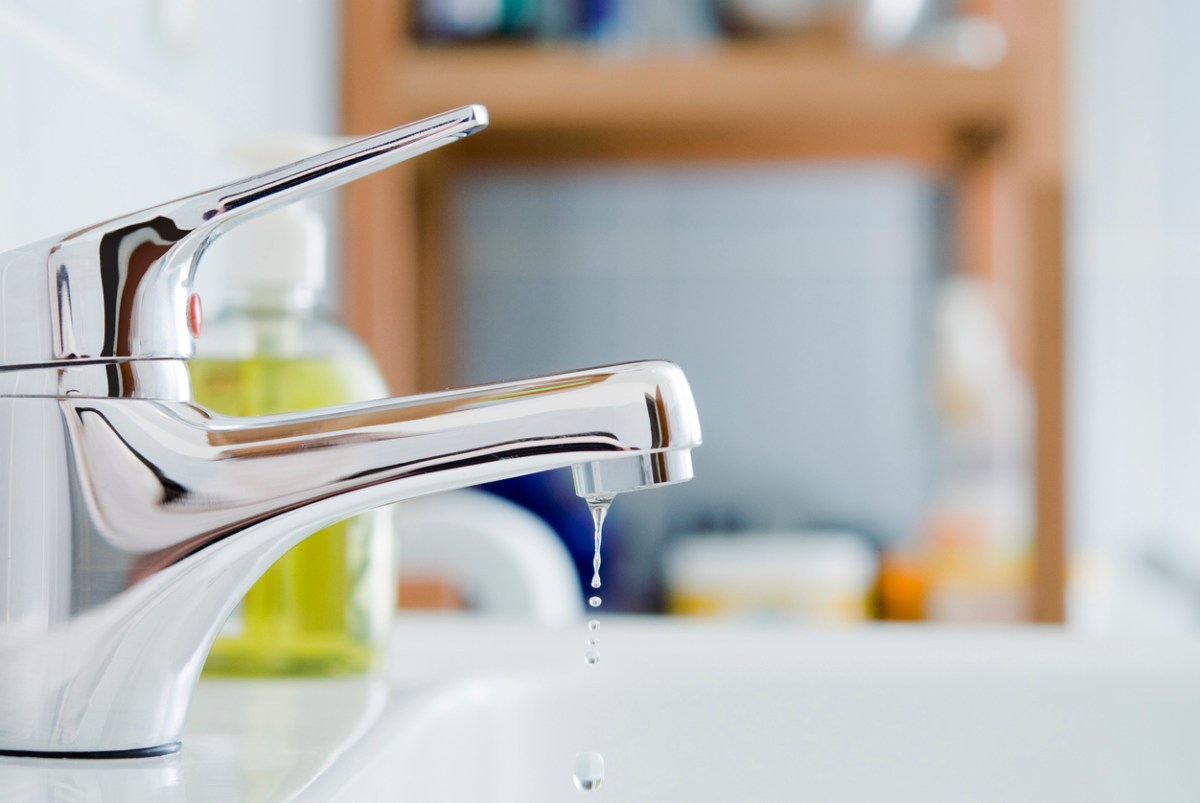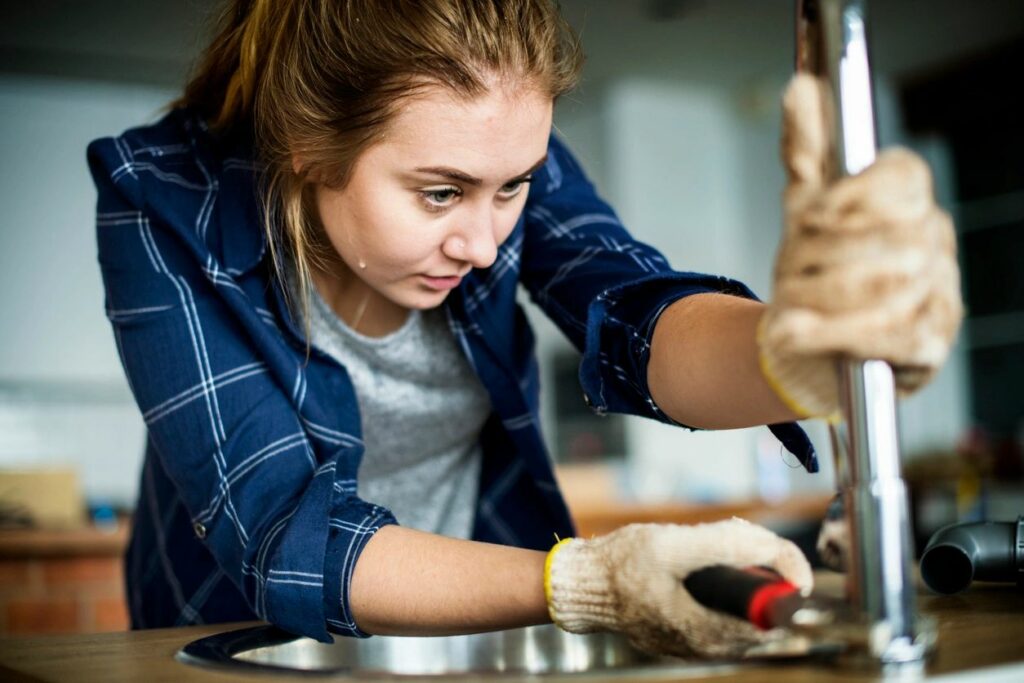The article which follows relating to Why Are My Faucets Dripping (And Can I Fix It Myself)? is totally attention-grabbing. Give it a go and draw your own assumptions.

Leaking taps may look like a minor inconvenience, but their effect goes beyond simply the nuisance of the sound. From drainage to sustaining unnecessary monetary prices and wellness risks, ignoring a dripping tap can lead to numerous effects. In this post, we'll explore why it's important to address this usual family issue promptly and successfully.
Wastage of Water
Environmental Impact
Dripping taps contribute dramatically to water waste. According to the Epa (EPA), a single tap trickling at one drip per second can lose greater than 3,000 gallons of water per year. This not just stress water sources yet also influences communities and wildlife based on them.
Financial Expenses
Raised Water Costs
Past the ecological influence, leaking taps can pump up water expenses significantly. The collected waste gradually equates into higher energy expenditures, which might have been avoided with prompt repair services.
Prospective Residential Property Damage
Moreover, long term leaking can result in harm to fixtures and surface areas surrounding the faucet. Water accumulation can create staining, deterioration, and even architectural issues if left neglected, resulting in added repair work prices.
Health Problems
Mold and Mildew Development
The consistent presence of moisture from a leaking faucet creates an excellent environment for mold and mildew growth. These fungi not only endanger interior air quality yet also position health dangers, especially for people with respiratory problems or allergies.
Waterborne Conditions
Stationary water in trickling taps can become a breeding ground for bacteria and other pathogens, increasing the threat of waterborne conditions. Pollutants such as Legionella germs thrive in stationary water, possibly causing major illnesses when consumed or inhaled.
Do it yourself vs. Professional Fixing
Benefits and drawbacks of DIY Repair
While some might try to take care of a dripping tap themselves, do it yourself repair work feature their own collection of difficulties. Without correct knowledge and devices, DIY efforts can intensify the concern or cause incomplete fixings, prolonging the trouble.
Advantages of Hiring an Expert Plumber
Hiring an expert plumber ensures that the underlying reason for the trickling faucet is attended to properly. Plumbing technicians have the knowledge and devices to detect and repair faucet problems successfully, conserving time and minimizing the risk of further damage.
Step-by-Step Guide to Repairing a Dripping Faucet
Tools Needed
Before trying to repair a leaking faucet, collect the needed devices, consisting of an adjustable wrench, screwdrivers, replacement parts (such as washers or cartridges), and plumber's tape.
Usual Faucet Issues and Their Solutions
Identify the type of faucet and the specific concern causing the drip. Common troubles include worn-out washing machines, corroded shutoff seats, or defective O-rings. Describe manufacturer directions or on-line tutorials for step-by-step assistance on fixings.
Preventive Measures
Routine Upkeep Tips
To stop trickling faucets, do regular upkeep such as cleansing aerators, inspecting for leaks, and replacing worn-out parts quickly. Additionally, consider installing water-saving devices or upgrading to a lot more effective fixtures.
Significance of Prompt Repair Works
Dealing with dripping taps as quickly as they're discovered avoids further water wastefulness and prospective damage, ultimately conserving both water and money in the long run.
Influence On Property Worth
Perception of Well-Maintained Property
Preserving a home in good condition, consisting of attending to maintenance issues like trickling taps, boosts its viewed value and worth among potential customers or occupants.
Influence on Resale Worth
Qualities with well-kept plumbing components, including taps, command greater resale values in the property market. Dealing with trickling faucets can add to a positive perception throughout home inspections and settlements.
Ecological Responsibility
Specific Payment to Conservation
Taking obligation for dealing with dripping taps straightens with more comprehensive efforts toward water conservation and ecological sustainability. Every person's activities collectively make a substantial influence on maintaining priceless resources.
Sustainable Living Practices
By focusing on timely repair work and adopting water-saving practices, individuals add to lasting living practices that profit both present and future generations.
Final thought
Attending to a trickling tap goes beyond plain convenience; it's a crucial action towards saving water, reducing financial prices, and protecting health and residential or commercial property. Whether through do it yourself repair work or specialist help, taking action to deal with dripping taps is a small yet impactful method to advertise accountable stewardship of sources and contribute to a healthier, a lot more lasting future.
How to Fix a Leaky Faucet: Step-by-Step Repair Guide
A leaky faucet may seem like a simple annoyance, but if it's not fixed promptly, that leak could cost hundreds to potentially thousands. From water damage to mold, mildew, and high water bills, even a tiny leak can be catastrophic if left unattended. Damage like this can even affect the overall value of your home, so it's important to take the right approach for leaky faucet repair. You may need the help of a plumber in some cases, but we've got a few tips you can try on how to fix a leaky faucet before calling the pros.
Four Faucet Types
When you're learning how to fix a leaky faucet, the first step is knowing what kind of faucet you're working with! There are four common types.
Cartridge Faucets
Cartridge faucets come in one- or two-handled varieties. In one-handled cartridge faucets, hot and cold water combines in a single cartridge. In the two-handled versions, hot and cold water are controlled separately and mixed in the faucet.
Ball Faucets
Ball faucets have a single lever you push up and down to adjust the pressure and rotate to change the temperature. A slotted metal ball controls the amount of water allowed into the spout.
Compression Washer Faucets
They're the oldest type of faucet, but they're still used in many homes — especially older ones. Compression faucets have two separate handles that, when turned, raise or lower the washer that seals a water valve. This valve stops water from flowing through the faucet when it is turned off.
Disc Faucets
Disc faucets rarely need to be repaired due to their maintenance-free design. The water flow is controlled by two discs — the upper one raises and lowers against a fixed lower disc, creating a watertight seal. If your disc faucet starts leaking, you may need to replace the seals or clean residue buildup from the inlets.
Fixing a Leaky Faucet
Step 1: Turn Off the Water
Whether you're learning how to fix a leaky bathtub faucet or how to fix a leaky kitchen faucet, always turn off the water supply to your working area when you're fixing a leak. The last thing you want is a flood added to your list of things to fix.
Look for the shutoff valves below your sink or around the tub and turn them clockwise to stop the water flow. If your faucet doesn't have shutoff valves, you may need to turn off the water for the whole house. Check to make sure it's off by turning the faucet on. If nothing comes out, you're ready to start the repair.
Step 2: Take Apart the Faucet
How you disassemble your faucet depends on the type of fixture you have. You can use a flathead screwdriver to remove the caps on top of the handle or handles for cartridge and compression faucets. Inside, you should see handle screws. Unscrew these with a screwdriver to remove the handle.
Disc- and ball-style faucets will typically have an inlet screw near the handle, and removing that will reveal the interior of the faucet.
Detach the Valve Stem
For cartridge- and compression-style faucets, you'll see the inner valve stem or cartridge once you remove the faucet handles. If you have a compression faucet, unscrew the brass valve stem. If you have a cartridge faucet, pull out the cartridge. If your cartridge has been in place for a while, it may require some tools or extra force to remove it due to mineral deposits.
Examine and Replace Parts
Once you've removed the parts, check them out to confirm what needs to be replaced. You may see corroded rubber washers, O-rings, stems, or cartridges. On a ball-style faucet, check the seats and springs for damage.
If you need to repair a leaky disc faucet, check the inlet and seals on the lower disc.
Once you determine what parts must be replaced, visit your local hardware store. Bring the damaged parts with you to ensure you can purchase the correct components to replace them.
Clean Valves and Faucet Cavity
If you've removed a stem or cartridge, you may notice mineral buildup in the faucet's threads. Use white vinegar to clean the valve seat by soaking it for a few minutes, then scrub it away with a soft toothbrush and rinse with warm water. You can also clean the interior of the faucet in the same way.
Reassemble the Faucet
Once your faucet is cleaned and the required parts have been replaced, it's time to reassemble it. Put the pieces back together and slowly turn the water supply back on. Doing this slowly is crucial because too much initial water pressure can damage the new hardware you've just installed.
https://homewarranty.firstam.com/blog/how-to-fix-leaky-faucet

We had been made aware of that write-up about Should I Repair or Replace a Leaky Faucet? from a pal on our other domain. Sharing is nice. Who knows, you could be helping someone out. Thank you for your time. Don't hesitate to check our blog back soon.